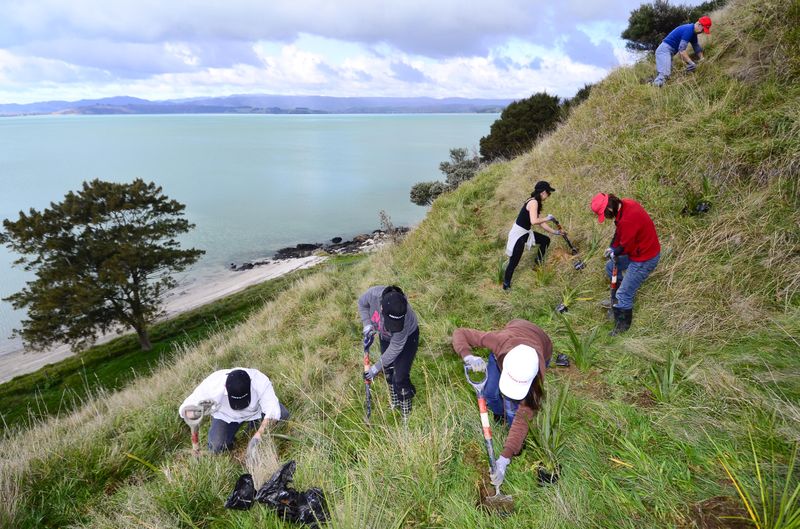Last year the Ministry for the Environment released Environment Aotearoa 2015. This was the first state of the environment report under the new Environment Reporting Act. Today the Parliamentary Commissioner for the Environment has released her review of that report. Her main point is that she is pushing the Ministry to prioritise the key environmental challenges that New Zealand faces and set out what action is needed to address them.
The Commissioner makes a strong point – there is only so much value in giving the public more information without helping them interpret it. The public would benefit from understanding which are the environmental issues they should be most concerned about, and what can be done about them.
To help kickstart the debate the Commissioner has highlighted four key environmental challenges – climate change, erosion, pests and fresh water quality. She has also delved into some solutions – some of which are surprisingly simple. This raises the question of why we aren’t taking action already.
What are the top environmental challenges?
In the view of the Commissioner the top environmental issue is climate change, and it is pretty hard to argue with her reasons why:
Temperatures are increasing, the ocean is acidifying, and the sea is rising
As carbon dioxide emissions continue to rise the Commissioner is concerned about potential ‘tipping points’ such as the thawing of ice in the Arctic, which could release a lot of methane – another greenhouse gas. The risks posed by climate change mean it is not simply our biggest environmental challenge, it is one of our biggest economic challenges too.
Probably the biggest impact of climate change on New Zealand is currently seen in our oceans. Carbon dioxide emissions are turning the ocean more acidic, which makes life difficult for any marine critters that use a shell. The oceans are also soaking up the bulk of the heat, causing them to expand and rise, putting our cities and towns at risk. The extra heat in turn robs the water of oxygen, creating the perfect environment for jellyfish to thrive. When you add the problems of runoff from land and the impact of fisheries, some ocean ecosystems are in trouble. You don’t need to look further than the fact that 9 of our 40 seabirds are listed as critical or endangered.
Meanwhile back on land, forest clearance has left vast areas of land exposed, and much of the soil has washed into waterways. Once fertility is lost plants can’t re-establish. The problem is likely to get worse as climate changes increases the ferocity of storms.
Sedimentation doesn’t only harm the land, it also harms our rivers, lakes, estuaries and the coastal environment. Combine that with increased nutrients leaching into our waterways, dams and irrigation that slow or reduce flow and increased temperature from fewer trees and you have the perfect recipe for algal blooms. While some of our highland rivers are still pristine, in the lowlands where towns and farms are they are increasingly degraded.
The other key problem on land is introduced mammal predators threatening our native species. The Commissioner points out that many species are already extinct and many others, such as the kokako, are headed that way.
What should we do about these issues?
The most surprising part of the Commissioner’s report is how simple some of the solutions to these problems are.
She points out that one solution would simultaneously knock many of these issues on the head: planting trees on our erosion prone land. As Pure Advantage pointed out in their , planting erosion prone land would have several positive benefits. It would:
- reduce our net carbon emissions by soaking up carbon dioxide, buying us time to work out a plan to wean ourselves off fossil fuels;
- provide landowners with an income from the carbon price;
- reduce erosion and stabilise land;
- improve our water quality; and
- provide habitat for native plants and animals.
In fact, work by Scion suggests that once these issues (externalities) are taken into account, forestry is actually competitive with dairy. All in all boosting forestry looks like a no-brainer. Unfortunately through past mismanagement of the , the forestry industry is rightly wary of expanding. We need a strategy for forestry, or ideally for land use generally, to work out how we get land used in the best way for our environment and economy. The public deserves to know why we have no plan for planting more trees.
The Commissioner suggests some other important actions to deal with these issues. Urban planning is crucial to reducing carbon emissions – mainly through increased density. Luckily this is also a win-win as increased density can provide truly affordable housing once you take house prices and transport costs into consideration.
Increased marine protection and raising our effort against pests are also amongst her recommendations. Again these investments have economic dividends through tourism and our ‘clean green’ international brand. Nature is our number one asset – we must invest in it.

